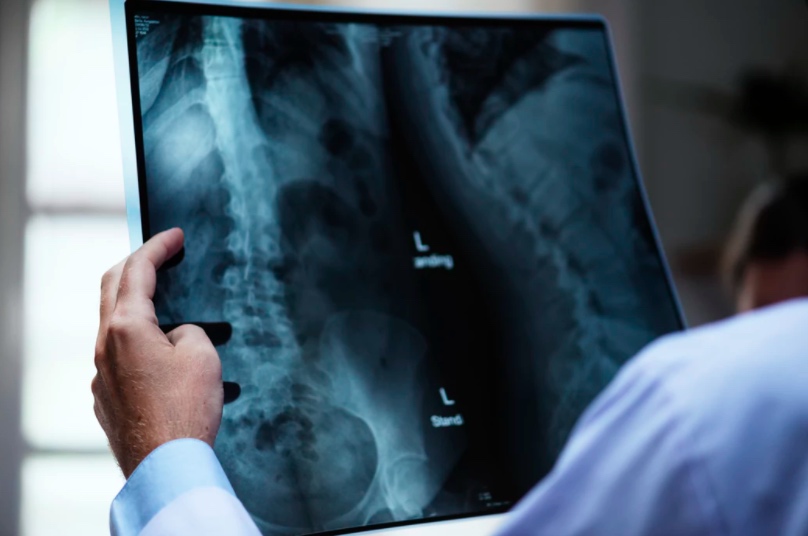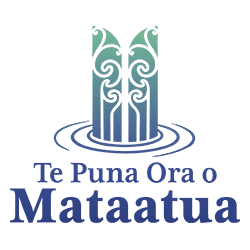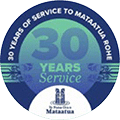1.0 Executive Summary
1. Te Puna Ora o Mataatua Charitable Trust (the Trust) acknowledges and thanks the Bay of Plenty District Health Board (BOPDHB) for their response to the Trust’s feedback on the Te Teo Herenga Waka (TTHW) & Regional Māori Health Services (RMHS) proposed redesign through the “Initial Outcomes Document”.
2. The Trust acknowledges the additional work completed by the BOPDHB in considering the different responses provided by Māori providers. It also would like to acknowledge the consultation hui that took place in the Eastern Bay of Plenty on 7 August 2017 attended by the CEO, GM Planning and Funding, Acting General Manager Māori Health Planning and Funding and Chief Operating Officer.
3. The Trust is pleased that proposals 2a and 2b are not being progressed. However the Trust is disappointed that overall, the majority of the issues and concerns raised in the original feedback from the Trust have not been addressed and appear to have not been implemented. To realise the goal of uniting people and teams to achieve better outcomes for Māori, the BOPDHB must take an organisation wide approach and not solely a change in the Māori health teams’ structure.
4. The BOPDHB proposal still aims to create a new position of GM of Māori Health alongside the GM of Planning and Funding. The proposal also seeks to align Māori staff, kaupapa contracts and providers under a mainstream model. Ultimately, where staff do not have a clear reporting line to a qualified and experienced Māori manager then there needs to be another trigger to change people’s behaviours. This requires tangible triggers and mechanisms to be built through all contractual obligations. The contractual obligations must outline clear key performance indicators and capabilities. Based on the Initial Outcomes Document—both are absent.
5. The current system relies on the goodwill of all involved to try and achieve better outcomes for Māori. We know it is human nature, especially in a high-workload environment, to follow well-worn paths of least resistance. It is therefore reasonable to expect that without tangible accountability measures at an executive level or operation level, Māori strategies and priorities are put aside to make way for the dominant mainstream priorities.
2.0 Response to feedback in the “Initial Outcomes Document”
6. We are pleased that the BOPDHB have responded to the feedback as follows:
• Proposals 2A and 2B will not be progressing;
• To work with the Māori Health Rūnanga (the Rūnanga) to discuss feedback and next steps outlined in the “Initial outcomes document”; and
• To further develop the position description for the creation of a new General Manager Māori Health (GM Māori Health) executive role with advice from the Rūnanga.
7. However, the Trust remains disappointed and dissatisfied that the BOPDHB did not respond to key issues and concerns as follows:
• Māori strategic plans and priorities need to be reflected in all General Managers (GMs) and Portfolio Managers (PMs) Key Performance Indicators (KPIs) across the BOPDHB;
• “Trendly” is not an accurate measuring and evaluation tool for Māori health and well-being. Any new strategic and organisational priority programmes must include the development of new evaluation and measuring tools that accurately capture Māori health and well-being data;
• Elevating and strengthening the executive leadership by creating a new GM of Māori Health will only be successful if the position can influence the whole organisational structure of BOPDHB not just the Māori health unit. This means the GM of Planning and Funding must be contractually accountable to the GM of Māori Health and PMs require dual sign off by both GMs;
• At an executive level the GM of Māori Health should have the same influence on the other 96.5% of funding. Their influence should not be confined solely to strategies, programmes and initiatives for Māori but should extend to including all mainstream strategies, programmes and initiatives for the mainstream;
• The “Good to Great Programme” needs to be further developed by the new incoming GM of Māori Health to include meaningful consultation and input from Māori health providers; and
• In developing strategic and organisational priority programmes the BOPDHB consider Eastern and Western sub-strategies given the different profiles of the communities.
3.0 Response to Proposal 3:
8. In regards to Proposal 3, the Trust agrees in principle to:
• Reducing duplication;
• Working less in silos;
• Closing the disparity gap and improving mainstream responsiveness to Māori health and well-being (influencing the other 96.5% of funding); and
• Building a unit with strong connections between the work and activities of the Māori Health Planning and Funding (MHPF) and Regional Māori Health Services (RMHS).
9. In relation to Proposal 3, the Trust does not agree with:
• Any reduction on TTHWs overall resources (as explained in step one of the “Initial Outcomes Document”) or refocusing of TTHW resources to support service improvement. Essentially the Trust view is that Proposal 3 is the same approach as proposals 2a and 2b which have been dropped due to overwhelming dissenting feedback;
• Positioning Māori health contracts and providers under a mainstream model (as detailed in step 4 of the “Initial Outcomes Document”).
10. The Trust reaffirms that if the BOPDHB is to enhance mainstream responsiveness to Māori, accelerate a reduction of Māori health disparities and enhance change management capability, then change management must be organisation wide and not limited to the Māori health teams.
11. To enable this to happen, the PMs must report directly to the GM Māori Health, and Māori advisors must be placed in all the PMs teams to create influence and leverage within the BOPDHB to achieve the stated goals for Māori health.
4.0 Response to Next Steps:
4.1 Response to next steps for the GM of Māori Health:
12. We recommend that the Rūnanga approves the final job description for the GM Māori Health. The following amendments should be made to the job description:
• That all funding requires dual approval from the GM of Māori Health and GM Planning and Funding;
• PMs report directly to the GM of Māori Health and GM Planning and Funding;
• That the GM of Māori Health, on behalf of the CEO, regularly reports and is accountable to the Rūnanga;
• The GM of Māori Health requires endorsement from the Rūnanga;
• The Good to Great programme is reshaped by the GM of Māori Health to include input from Māori health providers. This will include Eastern and Western sub-strategies given the different profiles of the communities; and
• That the new strategic and organisational priority programmes include the development of new evaluation and measuring tools that accurately capture Māori health and well-being data.
4.2 Response to next steps for Proposal 3:
13. We do not agree that Proposal 3 will lead to better Māori Health outcomes. At the core of this proposal the BOPDHB will be reducing the resource in the Māori Health teams as stated “these roles will have a bearing on TTHW’s overall resources”. This proposal also has a ‘mainstreaming agenda’ as opposed to a ‘responsiveness to ‘Māori’ agenda as it states that “each cluster area will manage the full spectrum of contracts and providers – mainstream and kaupapa”. This cannot be achieved by aligning Māori staff, kaupapa contracts and providers under mainstream models on the basis that shared learning will change the culture of the organisation.
14. The BOPDHB teams are very busy and it is human nature that under pressure they follow the path of least resistance. There are many examples across the state sector which rely on good will and relationships to achieve Māori outcomes but history shows overwhelmingly they’re not achieved. Some attempts by Parliament to even provide statutory requirements (Treaty clauses) to force local authorities ‘to take note of’ Māori interests and concerns are still not successful;
15. To improve responsiveness and achieve better outcomes for Māori the BOPDHB needs to systematically incorporate tangible cultural competency and accountability into every level of the organisation including contracts, key performance indicators, letters of expectation, performance review, organisational values and targets, policy, recruitment and training, community involvement, development of language and resource materials, data collection, relationships with Māori providers and ongoing quality improvement processes. This should be monitored and facilitated by Māori advisors in all of the PMs teams.
4.3 Response to the next steps for the final decision document:
16. The Trust would like to receive the final decision document as well as the final job description for the GM Māori Health. The Trust will evaluate this document to ensure the Treaty of Waitangi key principles of rangatiratanga (partnership) and taonga (health and well-being) provide a longstanding framework to develop strategic and institutional proposals. Specifically, the document will be evaluated on how Māori aspirations and assertions for self- determination and Māori applying their own solutions to improve Māori health are maintained.
5.0 Proposed Next Steps:
17. The key issues and concerns raised in the original feedback from the Trust that have not been addressed in the “initial outcomes document”. In addition to the recommendations made above, we recommend that the BOPDHB undertake the following actions before finalising the decision:
a) All PMs in the Planning and Funding Team report to both the GM Planning and Funding and the GM of Māori Health, with clear delegated responsibilities—providing line of sight, influence and integration;
b) The Planning and Funding Team PMs have letters of expectations and KPIs that reflect Māori priorities and they will report to GM Māori Health and the GM Planning and Funding;
c) The Māori Health Planning and Funding Team continue reporting to the GM Māori Health but be allocated across the organisational structure as follows:
i. Managing the 3.5% funding allocation for Māori in building capacity and capability as well as supporting strategic interventions;
ii. Positioned in key portfolio areas across the Planning and Funding Team to build policy and operational influence and integration.
d) The BOPDHB seek endorsement of the GM of Māori Health Job description and subsequent endorsement of the candidate.




